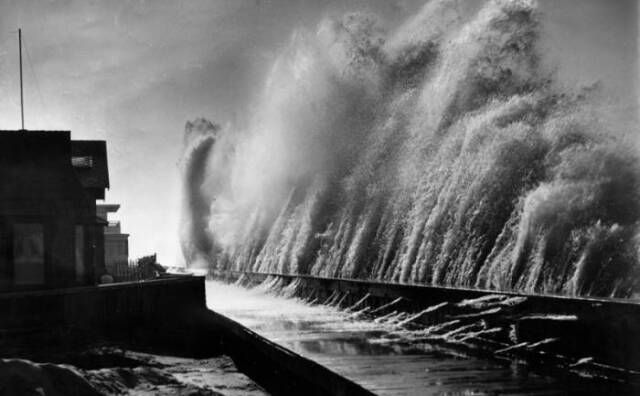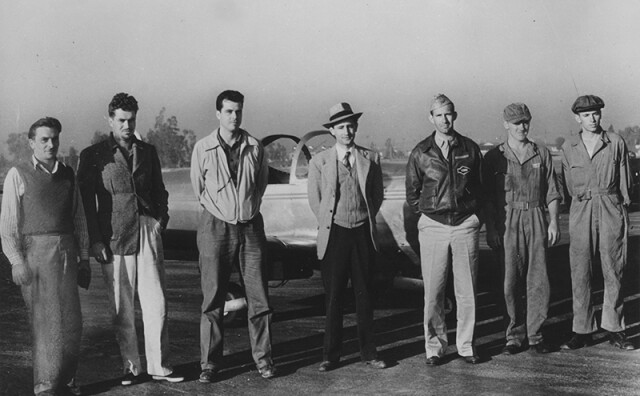Highland Park's Secret History As A Lawn Bowling Hotspot

On a bright summer day in 1964, dozens of athletes from around the world converged on the playing fields of the Arroyo Seco Park in Northeast Los Angeles. Wearing loose white linen clothes, the players, some of whom had traveled from as far away as South Africa, Australia and the Fiji Islands, lined the eastern boundary of the bowling green. They considered their competition, the weight of the ball and the elusive 120 feet of field between them and victory. An infectious stillness attested to the magnitude of the moment. Finally, a player tossed a small, spherical bowl, known as a "jack" or "kitty," onto the green, signaling the start of the World Lawn Bowling Tourney.

Imperial Origins
The history of lawn bowling stretches back at least 700 years. Although some scholars have traced its origins to ancient Egypt, most people believe it originated in England during the 12th century. The sport is intertwined with British history and lore. Legend has it that Sir Francis Drake refused to engage the Spanish Armada before he finished a game of bowls at Plymouth. The game was originally reserved for the nobility and the upper echelons of society. During the reign of King Henry VIII, a statute was passed that forbade the poorer classes from playing the sport, a prohibition reiterated in 1618, when King James I issued the Declaration of Sports. Despite these laws, the common folk couldn't stay away from the game, and fervor for the pastime spread through the British Isles. By 1848, Scotland alone had 200 lawn bowling clubs.
As Britain expanded its colonial empire in the late 19th and early 20th centuries, disseminating enslavement, racism and the English language, it also introduced lawn bowling to many of its conquered territories. Australia, Tasmania and New Zealand had established lawn bowling clubs by the 1860s and clubs were founded as far away as South Africa and Fiji by 1900.
Despite lawn bowling's popularity in Britain and its dominions, it remained a boutique sport in the United States until the 20th century. When it finally gained popularity, it was thanks to the residents of sunny, sporty California.
The St. Andrew's Society of San Francisco, the oldest public lawn bowling club in the United States, established permanent greens at Golden Gate Park in 1902. Over the next two decades, the sport crept southward and found a toehold in Los Angeles County.
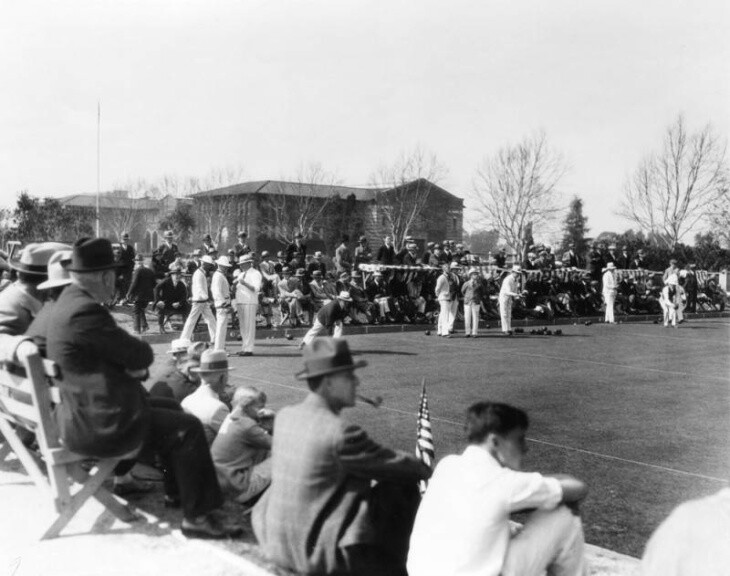
An Ancient Sport Endures
The Pasadena Lawn Bowling Club opened its doors in 1921, making it the first such club in Southern California. By 1934, we had 15 member clubs with nine in Los Angeles County: Beverly Hills, Claremont, Exposition Park, Highland Park, Holmby Park, Inglewood, Los Angeles, Long Beach and Pasadena.
The popularity of the sport surged, driven by the recreational outdoor culture of Los Angeles and the region's population boom.
The most popular club in the region was the Arroyo Seco Lawn Bowling Club in what is now Hermon Park. Funded by the federal government through unemployment relief bonds, construction of the park's greens was completed in 1932 at the height of the Great Depression — just in time to host an "unofficial" world lawn bowling tournament that coincided with the Olympic Games.
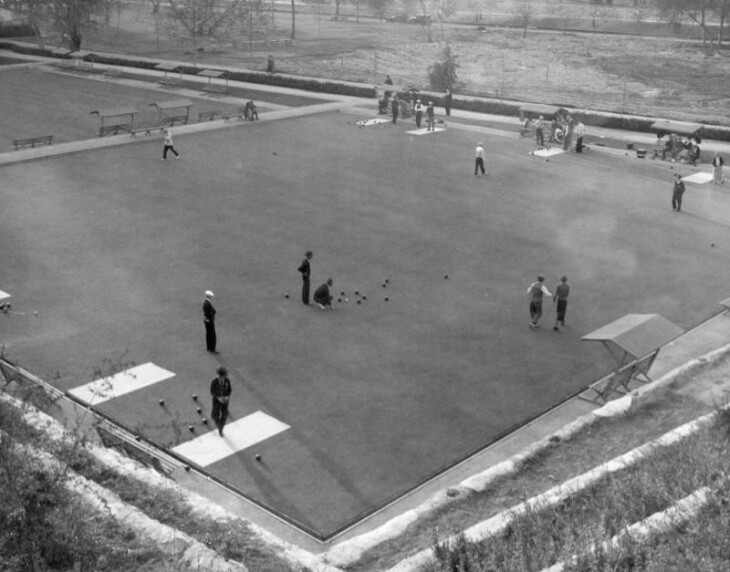
That year, A. E. Rudd, then-chairman of the American Lawn Bowling Association, lauded Arroyo Seco Park's greens as the best in North America. Thirty years after its construction, the park was still the only location in the world with four bowling greens in one place. Visitors from New Zealand, Australia, Canada and other countries who played at the park wished they "could pick up [the] four rinks and take them back home with them," according to a 1962 Los Angeles Times story. The Arroyo Seco Lawn Bowling Club was so popular it came to define the sport in Southern California, tempting local and foreign players.
"Although the sport of lawn bowling hasn't reached the nation-wide popularity of baseball, golf, tennis, etc.," the Los Angeles Times wrote in 1936, "Southern California is a hotbed of the ancient sport."

In 1939, after six years of waiting, the city of Los Angeles bestowed the park with a clubhouse. Likely funded privately by members, the building was designed by architect Carl C. McElvy, who would be appointed California's first state architect in 1963. The 1940 Southern California Lawn Bowling Association Yearbook touted the $16,000 ranch-style building for having "every modern convenience, including hot and cold-water showers, electrically equipped kitchen, and beautifully furnished social hall."
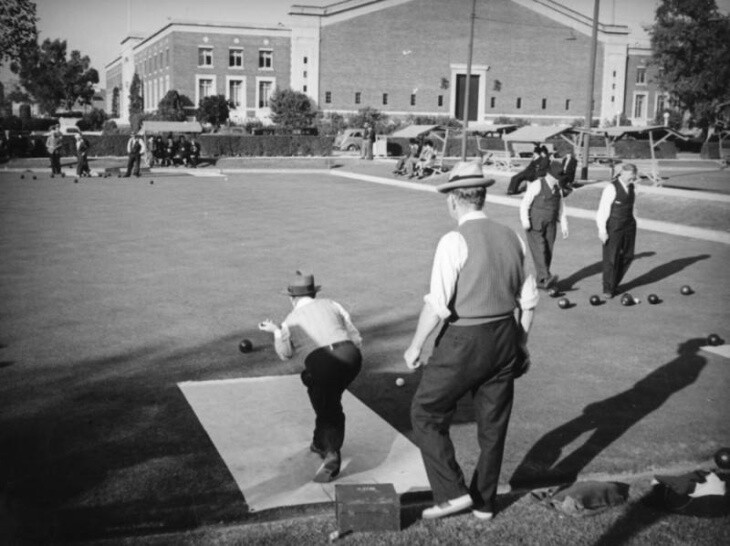
As the sport spread across Southern California, Highland Park, with its state-of-the-art club, remained its focal point. In 1940, Arroyo Seco Park hosted lawn bowling games 346 days out of the year.
Pasadena-based lawn bowler and historian Lee Patrick Sullivan says Arroyo Seco Park's role in the history of lawn bowling in Southern California is unmatched: "You can't undersell how important the park was. It was the Mecca. Everyone wanted to play there." And play they did. The park hosted major tournaments every decade from the 1930s through 1970s. But when the popularity of the sport waned, nowhere was hit quite as hard as Arroyo Seco Park.
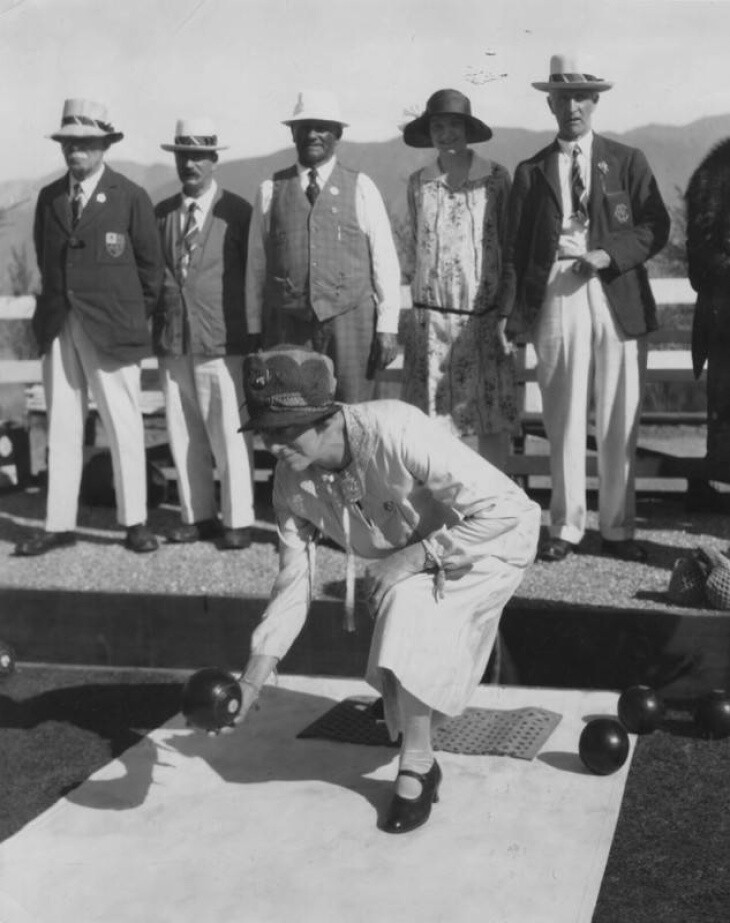
End Of An Era
In 1976, disaster struck Arroyo Seco Park's lawn bowling club. After more than 40 years of continuous use, the clubhouse was ransacked. Windows were smashed, trophies were stolen, records were destroyed or damaged. Information regarding the vandalism is incredibly scarce and not well documented. It's unclear if the crime was ever solved but its repercussions were profound.
Because of the vandalism, many members of the Arroyo Seco Park Lawn Bowling Club transferred to nearby clubs in Pasadena, Santa Anita, Glendale and Alhambra. By the late 1970s, the number of members playing at Arroyo Seco Park had dwindled from hundreds to a tenacious few. Membership dues, which funded the maintenance of the club's greens, plummeted and the verdant fields were eventually abandoned.
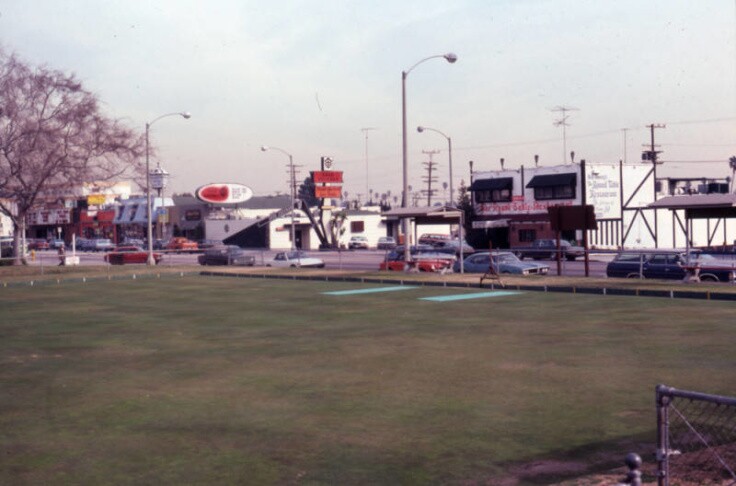
Some lawn bowlers also think the passage of Proposition 13 in 1978, which decreased property taxes and restricted annual increases of assessed real property value, left the city and county with less money to spend on recreational spaces. They believe the city of Los Angeles began prioritizing sports facilities, such as tennis and basketball courts, that didn't require as much maintenance or water.
The last lawn bowling game at Arroyo Seco Park was held in January 1982. Within a year, the city replaced three of the greens with tennis courts. The fourth green was left to grow wild. However, the terraced rock stone walls surrounding the fields, which served as a favorite perching spot for many spectators of the sport, still stand, as does the clubhouse.
In the mid-1990s, the clubhouse was taken over by the L.A. Department of Cultural Affairs and converted to an art center. It now hosts visual and urban art classes for children. Remnants of its lawn bowling past are still visible in the building's fireplace screen, which features the silhouette of a lawn bowler mid-jackball-toss.
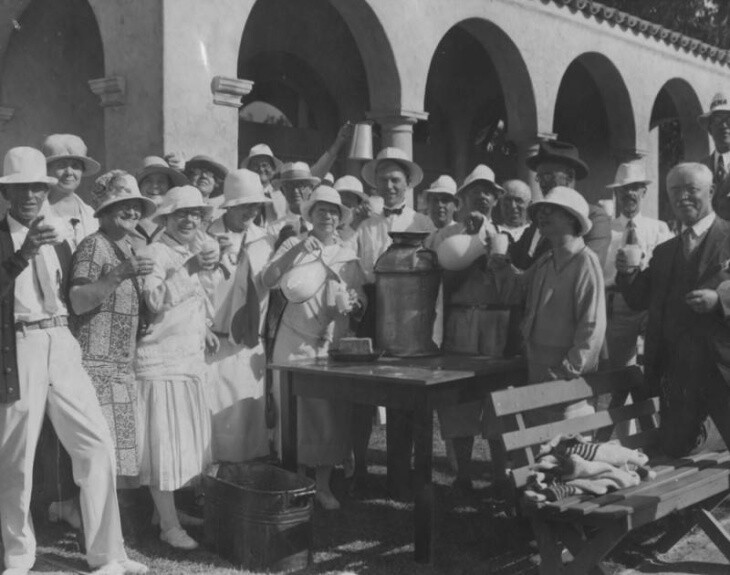
A Renaissance Of Bowls
Despite the general decline in membership since the 1970s, lawn bowling still has its fans. In fact, in some areas, its popularity has grown in the last decade.
The Pasadena club had eight members in 2006. Today, it has 62. The Hermosa Beach club, which was down to 14 members in the early 2000s, now has more than 40. In Orange County, the Newport Harbor lawn bowling club requires prospective members to complete three days of training before they receive a club key. Sullivan attributes the growth to a "convergence of retiring, healthy baby boomers and millennials turning away from traditional sports."
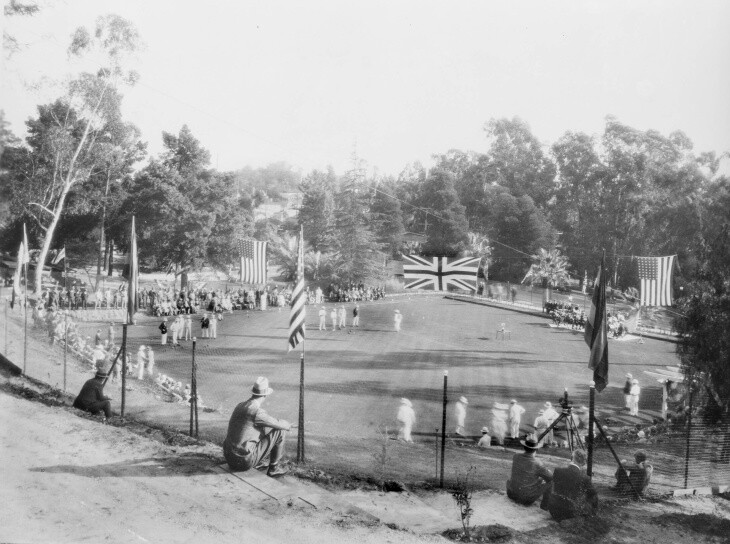
In Pasadena, Sam Schoenberg, 31, has been playing the sport since he was an undergrad at UCLA. He stumbled upon the sport while commuting to campus and fell in love. In school, lawn bowling served as a fun distraction. "Part of the initial draw was the camaraderie," he says, "Also, it's a game of skill. You want to get the bowl as close as you can. It requires hand-eye coordination and has a more meditative component to it."
But there are challenges to growing the sport. It requires a fair amount of space, plenty of water and people to maintain all those glorious green lawns.
It's also slow. A game of lawn bowling often lasts more than three hours. "The success of places like Newport Harbor, which are surrounded by young professionals, is that people can easily play there after work," says Berie Grobe, a team captain at the Coronado Lawn Bowling Club. Its membership fluctuates between 80 and 110 bowlers, most of whom are retirees.
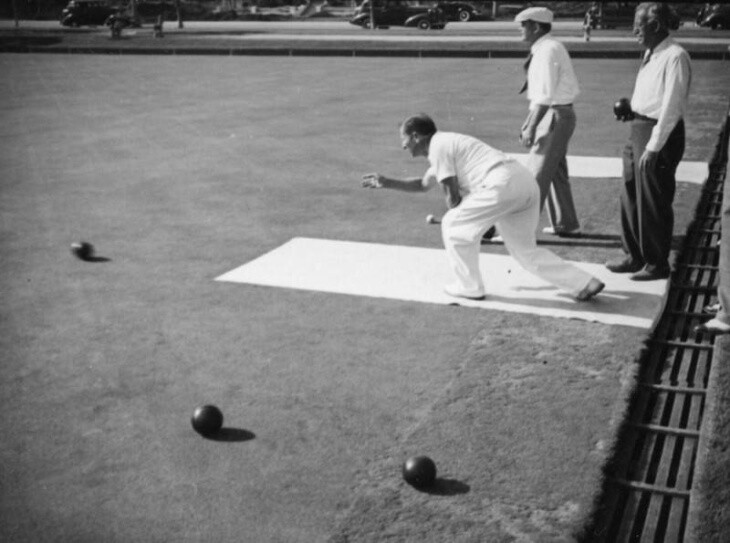
Tony Crutchfield, president of the Hermosa Beach Lawn Bowling Club and a native of Australia sees a difference in the way young people have taken to the sport in Australia. There, "The sport was in a big decline because of the old system of wearing whites. Youngsters didn't want to wear whites and they wanted to play barefoot," he says. Since clubs have relaxed their dress codes, the number of participants in their 20s and 30s has dramatically increased.
Monetary incentives can also sway engagement. Some tournaments "in Australia have $365,000 jackpots, whereas the largest prize in Southern California is around $10,000 at the Walt Disney Tournament," Crutchfield says.

Signs of life abound. In September 2019, San Francisco's Golden Gate Park hosted the Lawn Bowling National Championships. Holmby Park, the site of the last operating lawn bowling club in the city of Los Angeles, holds diverse competitions to increase awareness of the sport.
The sport itself often serves as the most visible billboard. "There are onlookers every Saturday that are passerbys in the park of all ages," Schoenberg says. "People see something going on and they're curious. We give them instructions and if there's not a lot going on, we invite them into the facility and they can try to learn, hands-on."
-
Restored with care, the 120-year-old movie theater is now ready for its closeup.
-
Councilmember Traci Park, who introduced the motion, said if the council failed to act on Friday, the home could be lost as early as the afternoon.
-
Hurricane Hilary is poised to dump several inches of rain on L.A. this weekend. It could also go down in history as the first tropical storm to make landfall here since 1939.
-
Shop owners got 30-day notices to vacate this week but said the new owners reached out to extend that another 30 days. This comes after its weekly swap meet permanently shut down earlier this month.
-
A local history about the extraordinary lives of a generation of female daredevils.
-
LAist's new podcast LA Made: Blood Sweat & Rockets explores the history of Pasadena's Jet Propulsion Lab, co-founder Jack Parsons' interest in the occult and the creepy local lore of Devil's Gate Dam.



